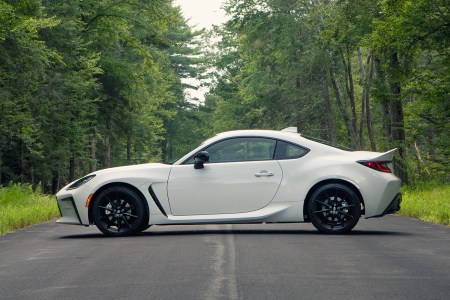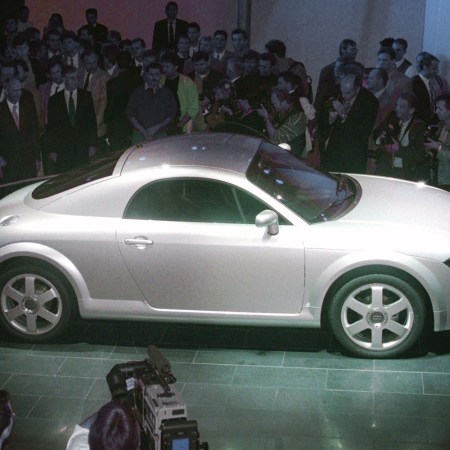For decades the Nissan Skyline GT-R represented forbidden fruit to American high-performance enthusiasts. The sports car was a trans-Pacific lure into a world where twin turbochargers, all-wheel drive and incredible aftermarket support churned out one of the most exciting Japanese market vehicles ever built.
It wasn’t until the late 2000s that Nissan deigned to import a version of the coupe, nicknamed “Godzilla,” to the United States, dropping the Skyline name from the badge and labeling it simply “GT-R.” When it arrived, the R35 generation of the venerable vehicle instantly grabbed the attention of not just longtime Nissan fans, but also legions of drivers who were shocked by what appeared to be a modern-day supercar featuring ahead-of-its-time tech, but crucially bearing a sub-six-figure price tag.
Although the R35’s window sticker would rise over the course of its lifespan, it remained an astounding value proposition for those who craved sledgehammer acceleration and dyno-popping power above all else. Its reputation continues to be strong on the secondhand market, where the ersatz-Skyline competes hard against models like the Porsche 911 Turbo and the Ferrari 458 on the track and the street.
Nonetheless, when you zoom out from the diehards, the Nissan GT-R R35 remains relatively overlooked when compared to sports cars with more name recognition. If you’re interested in buying what amounts to a bargain supercar, here’s how to navigate the various updates, side-steps and trim changes that defined the 2009-2021 GT-R’s reign.
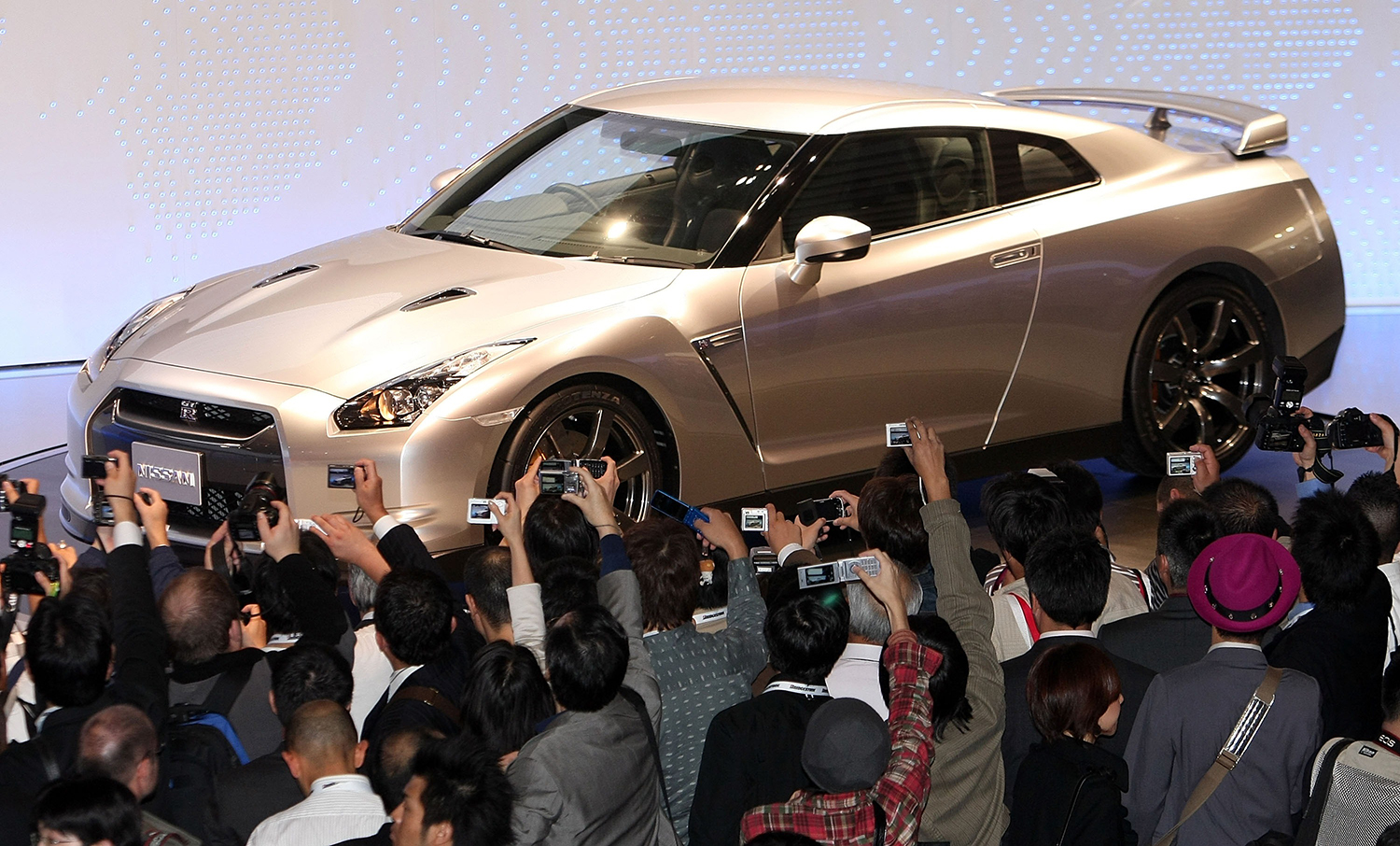
An Auspicious Introduction
The Nissan GT-R was unveiled at the Tokyo Motor Show in 2007 and found itself at the center of a virtual firestorm of attention. For starters, the R35-generation GT-R was big. Really big. Much larger than its predecessors, and certainly a standout compared to the svelter sports cars it was aimed at, the chunky, wide and high-roofed Nissan weighed in at just over 3,900 pounds despite making extensive use of featherlight aluminum and carbon fiber.
That amount of mass was more commonly associated with luxury sedans than dedicated performance coupes in that era, but prospective owners had no way of knowing that the GT-R’s combination of fierce all-wheel drive grip, explosive turbocharged power and computerized driving systems were prescient about the overall industry’s shift towards portly high-performance machines.
Indeed, it appeared as though the Nissan’s extra weight had almost no impact on its startling straight-line speed, a testament to the automaker’s engineers and their ability to fully harness the fury of the car’s 3.8-liter twin-turbo VR38DETT V6 engine. Rated at 480 horsepower and 430 lb-ft of torque, it fed that output through a six-speed dual-clutch automated manual transmission to all four wheels. Thanks to a double-secret launch control system (which led to an early fight with Nissan over voided warranties and broken gearboxes, resolved by an eventual software update), the car touched 60 mph in a scant 3.2 seconds.
At the time, a number like that was the exclusive province of European exotica costing double the GT-R’s roughly $70,000 asking price. Throw in a top speed of more than 190 mph, a rear bias for the AWD setup that kept 90% of engine torque flowing to the back axles until called upon to improve traction at the front, and enormous (for the era) 15-inch Brembo brakes, and the Nissan was capable of embarrassing more expensive badges in a road course as well as a drag strip.
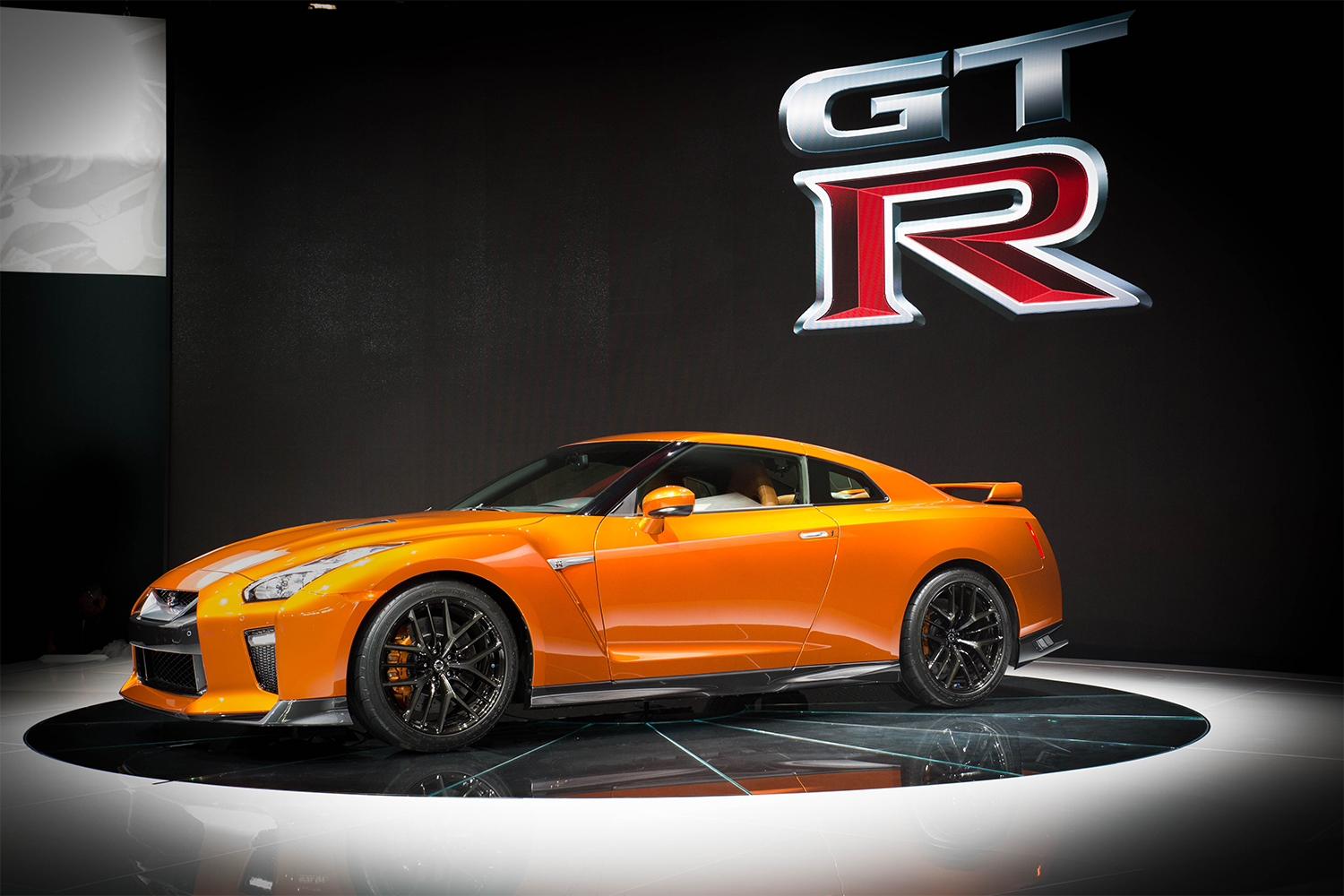
The Most Important Nissan GT-R Updates
Two significant updates were made to the standard version of the GT-R during its 15 years in America.
For the 2012 model year, the V6 was dramatically re-tuned to produce 530 horsepower, the transmission received internal upgrades to make for quicker, smoother shifting, and larger brakes were fitted behind new wheels. The suspension was tweaked as well, alongside a somewhat revised front fascia (integrating new LED lighting), and the base model was removed from the order sheet in favor of the better-equipped Premium trim being the new starting point.
Interim improvements arrived the following year that added another 15 horsepower to the mix, along with more extensive suspension improvements, but it wasn’t until 2017 that the GT-R received what could be considered a true refresh. It’s here that the Nissan coupe received a boost to 565 horsepower and 467 lb-ft of torque, in addition to reinforcement of its six-speed gearbox, a titanium exhaust system, a stiffer chassis all around and re-tuned shocks.
The Toyota GR86 Is One of the Last Affordable Sports Cars. Do You Care?
In an age of overwhelming acceleration, this coupe is more about characterVisually, the car was also differentiated from its predecessor with an eye towards aero improvements, a new set of 20-inch rims and an interior that was more plush than found in older models. GT-Rs from 2017 on are considered the most comfortable models to drive on a daily basis, and they’re also slightly quicker. By this point, the price had escalated past $100,000, which required an upscale interior and additional creature comforts to justify the added expense (including a larger infotainment screen). A 2020 transmission update sliced a millisecond or two off of gear changes, but isn’t considered a major change.
In addition to the standard GT-R, the coupe was also offered in a number of special editions. These included the NISMO GT-R which arrived for 2013, packing 600 horsepower, a 2.5-second quantum leap to 60 mph and the most aggressive suspension, braking and aero components available from Nissan’s motorsports program (with a somewhat lighter, barely quicker NISMO update in 2020), and the Track Edition featuring much of the NISMO’s road course-friendly content without the power bump.
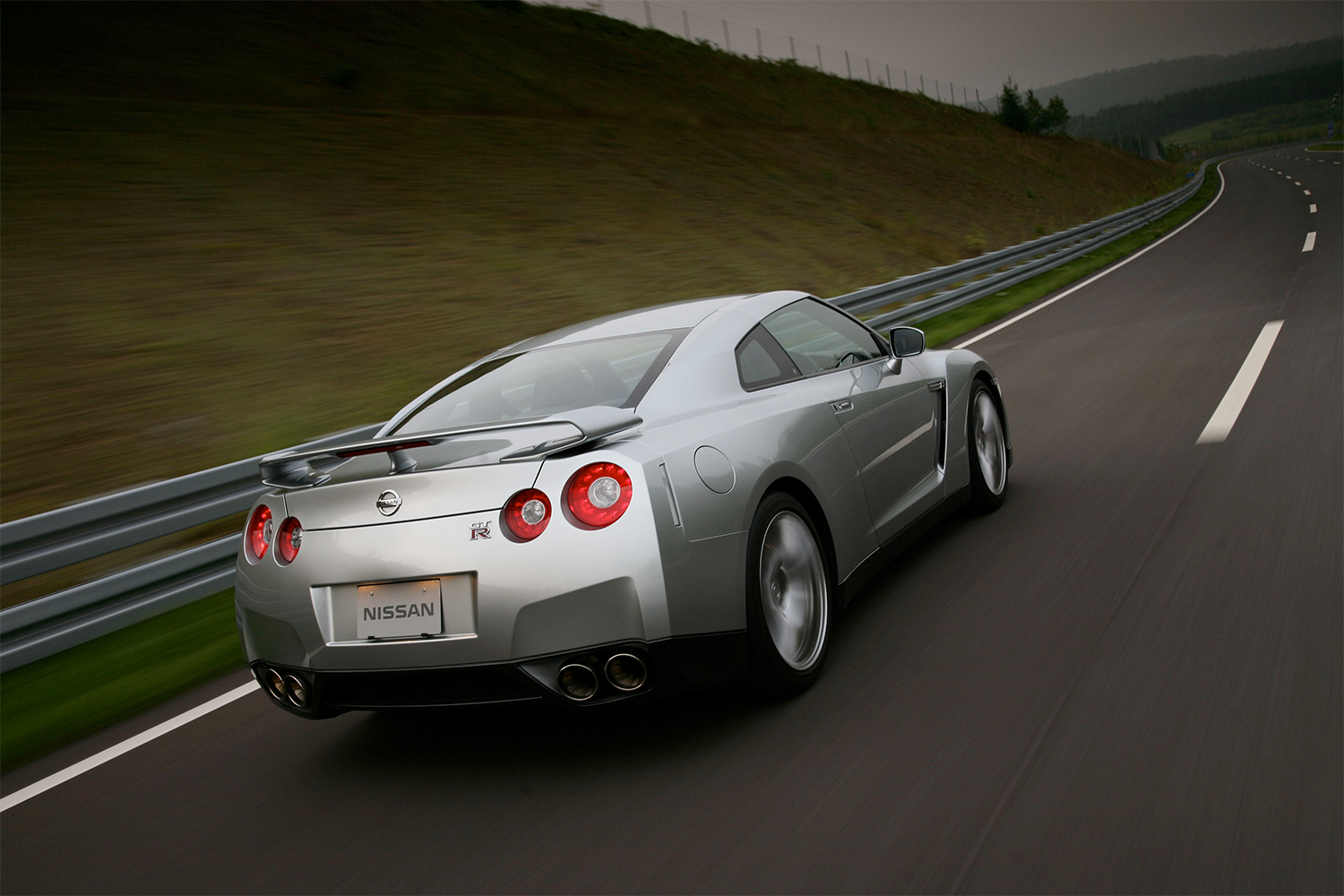
What to Watch Out For
The VR38DETT is as robust an engine as you’re likely to find, amply illustrated by aftermarket builds that have boosted its output well past the 1,000-horsepower mark. As with any purchase, a mechanical inspection performed by a trusted professional is a must, but there’s nothing to look for in particular here other than the standard signs that something is amiss with an internal combustion unit.
What does tend to fail? R35’s have a reputation for eating their anti-lock braking system pumps. They’re also known to have leaking rear shocks (especially in early models), and occasionally leak from the steering rack and sometimes the gearbox. Tire wear should be even, and if it’s not that could indicate an alignment issue. Inside the cabin, check for speaker rattle and seat bolster wear, especially on the driver’s side.
Given the problems with the first few model years of the GT-R’s launch control system, it’s worth paying extra attention to how the transmission shifts, whether every gear can be accessed and if it won’t access the first ratio when moving from reverse (which can be an indicator of abuse). Other than that, like the engine, the transmission is known to hold up well.
Above all, you’ll want to verify whether there are any modifications that have been done to the vehicle you are considering purchasing. These can range from common sway bar upgrades to full-on turbo replacements, engine tuning and total suspension system replacement. The more history you can get about any mods that have been performed, the better, but you’ll have to ask yourself whether you trust the shop that installed all that gear or if you’d prefer to start from stock yourself.
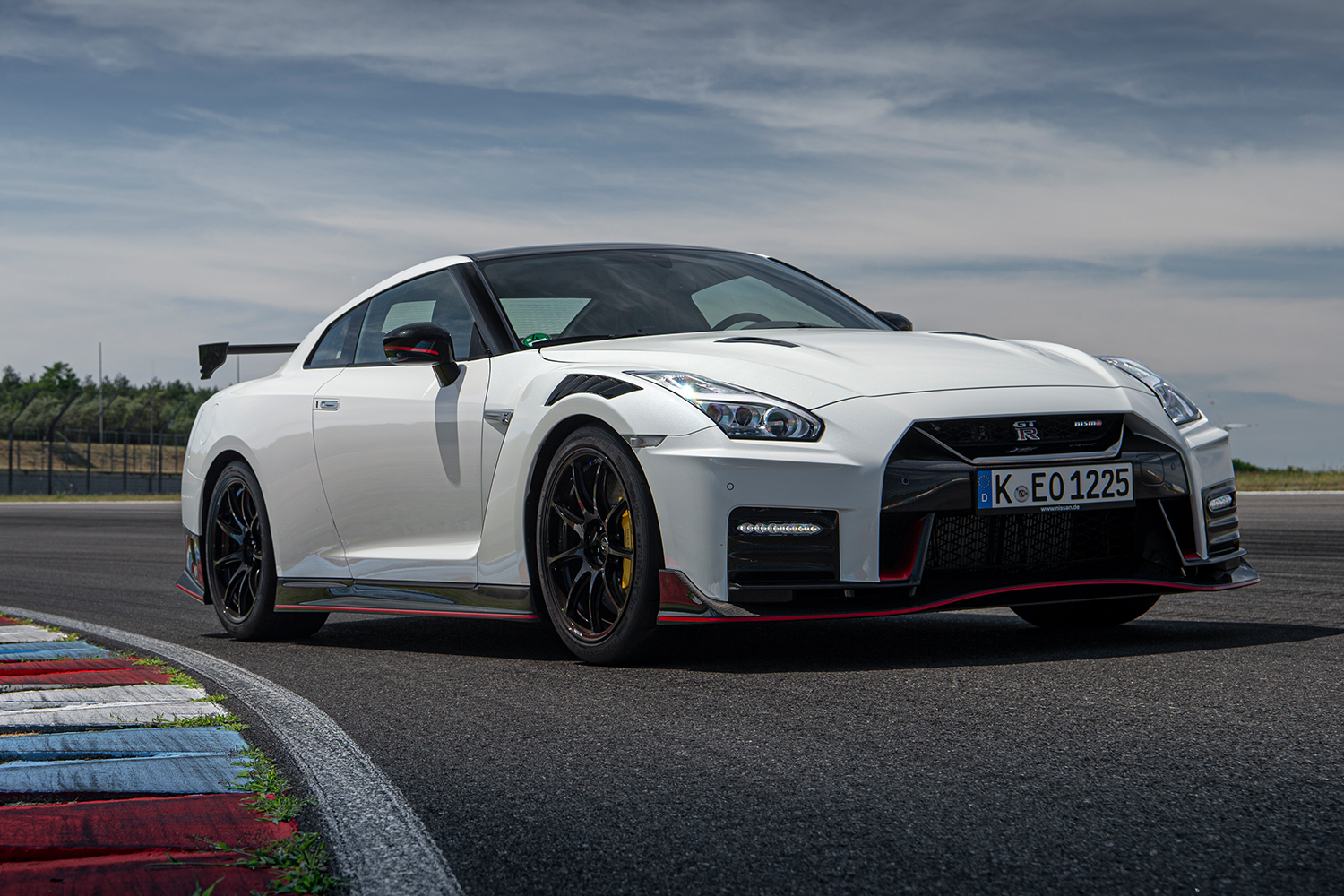
You Found One, Now What to Pay?
The market for the Nissan GT-R is strong, but not as over-the-top as some of its ‘90s JDM predecessors in recent years. According to Hagerty’s valuation tool, look to pay around $50,000 for a driver-quality first-year model, with post-2013 editions climbing to the $70,000 mark. That number holds strong even for refreshed 2017 models, but the NISMO edition will cost nearly double that amount, which reflects its scarcity on the market.
This article was featured in the InsideHook newsletter. Sign up now.

